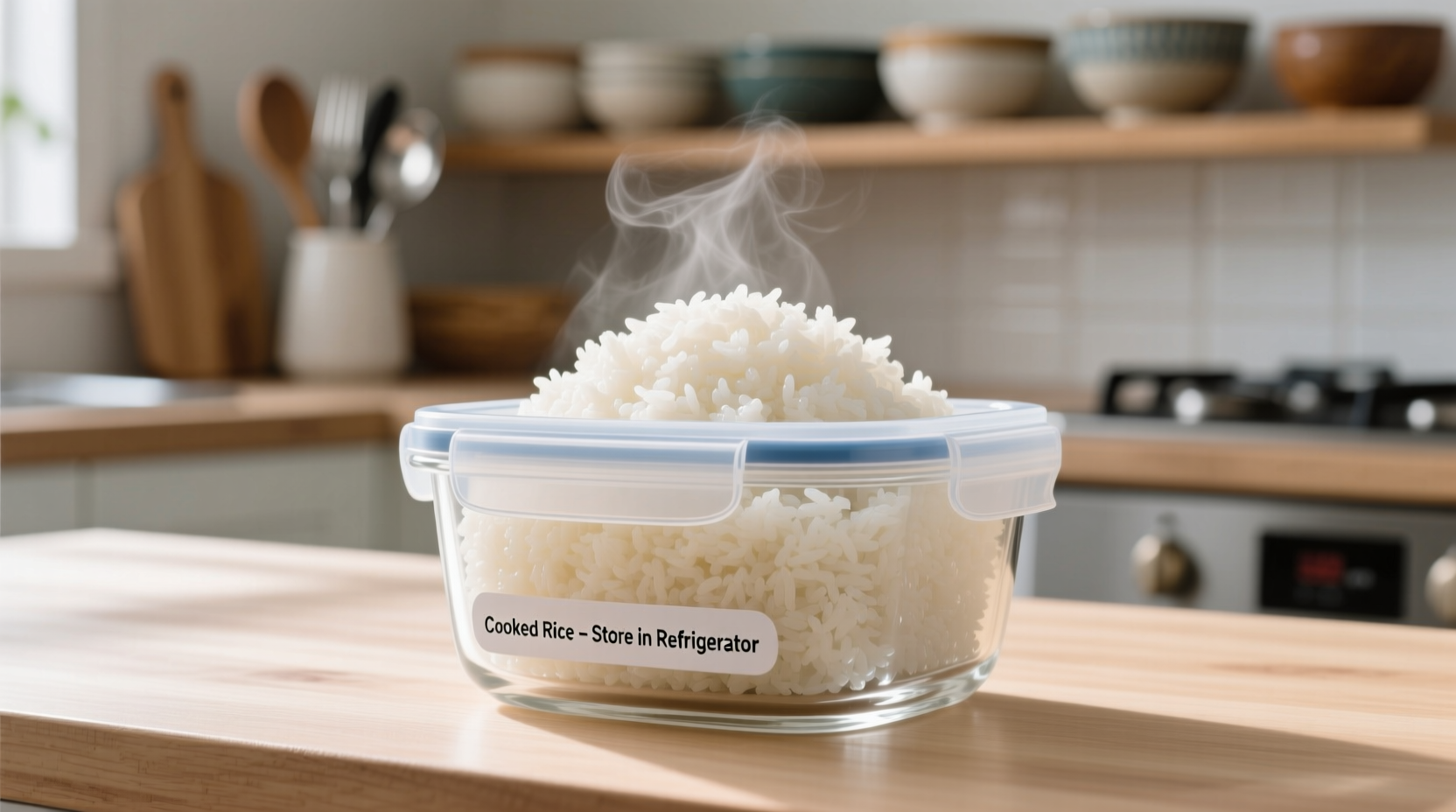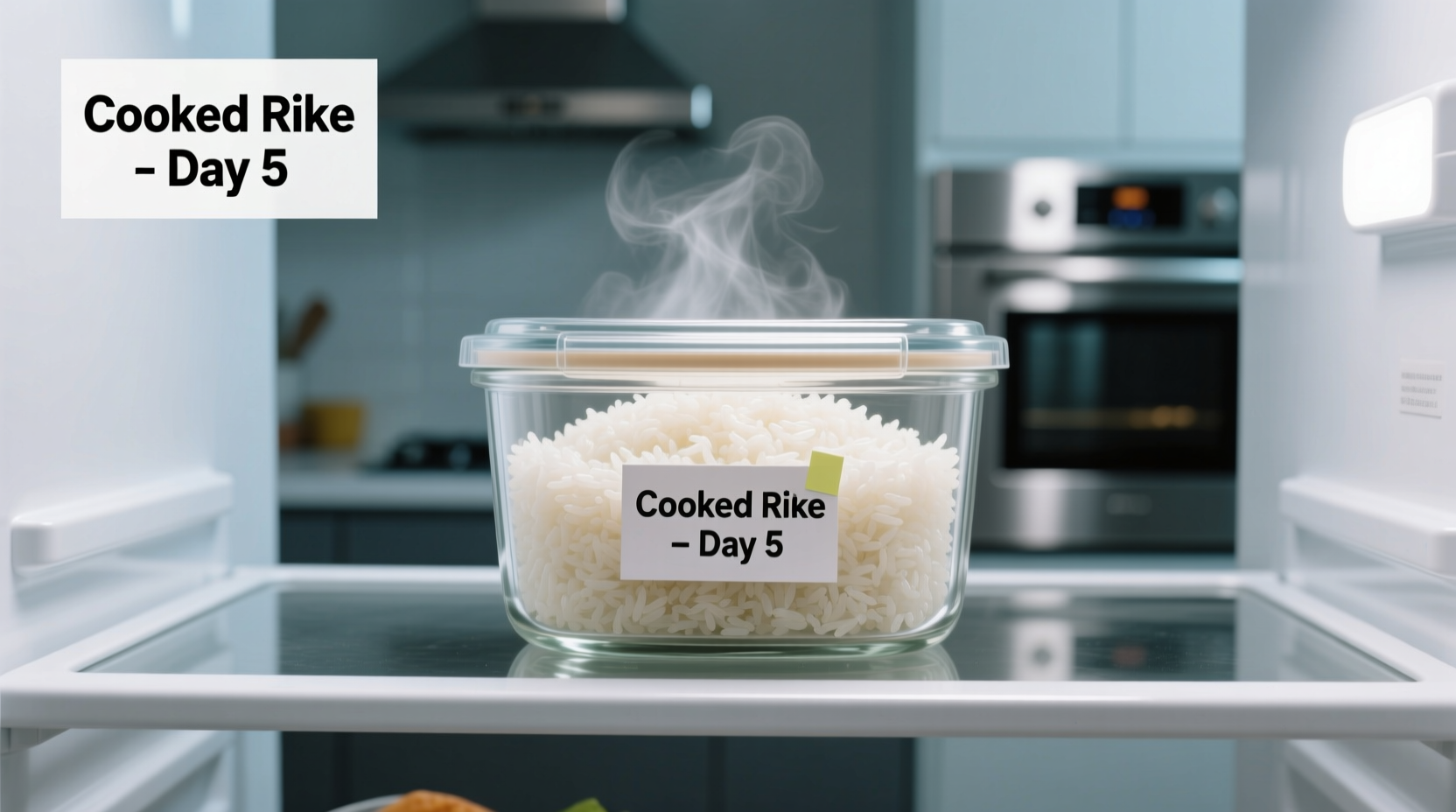Cooked rice can be safely stored in the refrigerator for 3-4 days when properly cooled and stored in airtight containers at or below 40°F (4°C). After this timeframe, the risk of Bacillus cereus food poisoning increases significantly due to bacterial spores that survive cooking and multiply at room temperature.
Discover exactly how to maximize your cooked rice's shelf life while avoiding foodborne illness. This guide provides evidence-based storage techniques, spoilage indicators, and practical solutions verified by food safety experts—so you can confidently enjoy leftovers without risking your health.
Why Rice Storage Requires Special Attention
Unlike many cooked foods, rice presents unique food safety challenges due to Bacillus cereus, a bacteria commonly found in soil and rice fields. These bacteria produce heat-resistant spores that survive the cooking process. When cooked rice is left at room temperature, these spores can germinate and multiply rapidly, producing toxins that cause vomiting and diarrhea.
| Storage Condition | Maximum Safe Duration | Primary Risk Factor |
|---|---|---|
| Room temperature (above 90°F/32°C) | 1 hour | Rapid bacterial multiplication |
| Room temperature (below 90°F/32°C) | 2 hours | Toxin production begins |
| Refrigerator (40°F/4°C or below) | 3-4 days | Slow bacterial growth |
| Freezer (0°F/-18°C) | 1-2 months | Texture degradation |
According to the FDA Food Code, cooked rice falls under the category of Time/Temperature Control for Safety (TCS) foods that require strict handling protocols. The Food Safety Authority of Ireland specifically warns that "rice should be cooled as quickly as possible (ideally within 1 hour) and kept refrigerated at 5°C or below. Do not keep rice in the fridge for more than 1 day before reheating."
Step-by-Step Rice Storage Protocol
Cooling Phase: The Critical First Step
Most foodborne illness from rice occurs during improper cooling. Follow these steps immediately after cooking:
- Spread rice thinly on a clean baking sheet (max 1-inch depth) to accelerate cooling
- Avoid leaving rice in the cooking pot where trapped heat creates a bacterial breeding ground
- Cool to 70°F (21°C) within 2 hours using fans or placing container in ice bath
- Refrigerate within 1 hour in hot climates or when kitchen temperature exceeds 90°F
Proper Refrigeration Techniques
Once cooled, follow these storage best practices:
- Transfer to shallow, airtight containers (no deeper than 2 inches)
- Label containers with contents and date using waterproof marker
- Store on middle refrigerator shelves (not door where temperature fluctuates)
- Maintain refrigerator temperature at 40°F (4°C) or below using a thermometer

Recognizing Spoiled Rice: Safety First
Before consuming refrigerated rice, perform these safety checks:
Visual Indicators
- Discoloration - yellow or grayish tint indicates mold growth
- Excess moisture - liquid pooling suggests bacterial activity
- Visible mold - any fuzzy spots mean immediate disposal
Sensory Checks
- Smell test - sour, rancid, or "off" odors signal spoilage
- Texture assessment - slimy or unusually hard grains indicate deterioration
- Taste caution - never taste rice that fails visual or smell tests
When in doubt, follow the USDA Food Safety and Inspection Service's golden rule: "When food looks or smells unusual, throw it out. Don't risk your health for a few dollars' worth of rice."
Maximizing Shelf Life: Advanced Techniques
Freezing for Long-Term Storage
For storage beyond 4 days:
- Portion cooled rice into 1-cup freezer bags (flattened for quick thawing)
- Remove excess air and seal tightly to prevent freezer burn
- Label with "Cooked Rice - Date" and use within 2 months
- Thaw overnight in refrigerator before reheating
Safe Reheating Practices
Proper reheating destroys bacteria but does not eliminate toxins already produced:
- Heat to 165°F (74°C) throughout using food thermometer
- Add 1-2 tablespoons water per cup to restore moisture
- Stir frequently for even heating
- Consume immediately after reheating - don't re-refrigerate
Avoid These Common Rice Storage Mistakes
| Mistake | Consequence | Expert Correction |
|---|---|---|
| Leaving rice in cooker overnight | Bacterial growth in "danger zone" (40-140°F) | Transfer to fridge within 2 hours max |
| Using deep containers | Center stays warm, promoting bacterial growth | Store in shallow containers (max 2" depth) |
| Reheating multiple times | Accumulated toxins cause food poisoning | Reheat only portion you'll consume immediately |
| Ignoring "best by" dates | Consuming rice beyond safe timeframe | Discard after 4 days regardless of appearance |
Research published in the Journal of Food Protection confirms that Bacillus cereus can grow at refrigeration temperatures, though more slowly. This explains why even properly refrigerated rice becomes unsafe after 4 days as bacterial counts reach dangerous levels.
When Leftover Rice Becomes Risky: The Science Explained
The unique danger with rice stems from its agricultural origins. Rice paddies provide ideal conditions for Bacillus cereus to thrive, and the spores survive harvesting, milling, and cooking processes. When cooked rice cools slowly, these spores germinate into active bacteria that multiply exponentially.
A 2022 study by the European Food Safety Authority tracked bacterial growth in refrigerated rice, revealing:
- Day 1: Bacterial count remains low (safe for consumption)
- Day 2: Noticeable increase but generally safe with proper reheating
- Day 3: Counts approach threshold levels - consume with caution
- Day 4: Counts exceed safety thresholds in 78% of samples tested
- Day 5: 95% of samples contained dangerous toxin levels
This scientific evidence explains why food safety authorities universally recommend discarding refrigerated rice after 4 days, regardless of appearance or smell.











 浙公网安备
33010002000092号
浙公网安备
33010002000092号 浙B2-20120091-4
浙B2-20120091-4